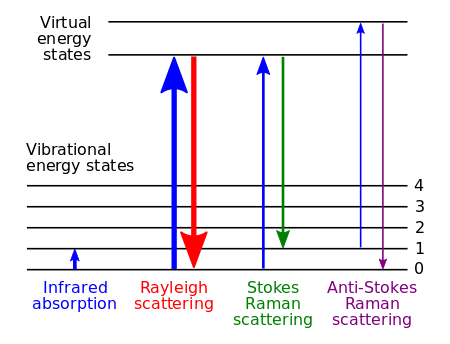What is Raman Effect ?
1 Answer
Raman Effect refers to the inelastic light scattering by a molecular species.
When EM radiation is incident of any matter, the molecules constituting the material absorb energy. In the classical picture, continuously varying electric and magnetic fields make the electrons in the atoms and molecules vibrate. These oscillating electrons in turn emit radiation in quite different directions than the incident radiation.
The scattering of photons by materials is termed as inelastic if the scattered photons have frequencies different from the frequency of incident radiation.
Examples of Inelastic scattering shall include Compton scattering and the Raman Scattering.
Raman effect is the inelastic scattering of a photon by molecules which are excited to higher vibrational or rotational energy levels. Molecules absorb energy of the incident radiation, just to re-emit photons of frequencies different from that of the incident ray.
The scattered spectra of a material consists of a number of lines. Most of the photons suffer elastic collisions and this results in a bright line with wavelength the same as that of incident light. This line corresponds to the elastic scattering and is hence called the Rayleigh line.
However, there are a number of lines with wavelengths both higher and lower than that of the Rayleigh line : Lines with higher wavelengths are called Stokes lines while those with lower wavelengths are the Anti-Stokes lines.

Raman Spectroscopy is essentially extremely useful in material identification among other purposes. It is used to analyze a wide range of materials, including gases, liquids, and solids.

